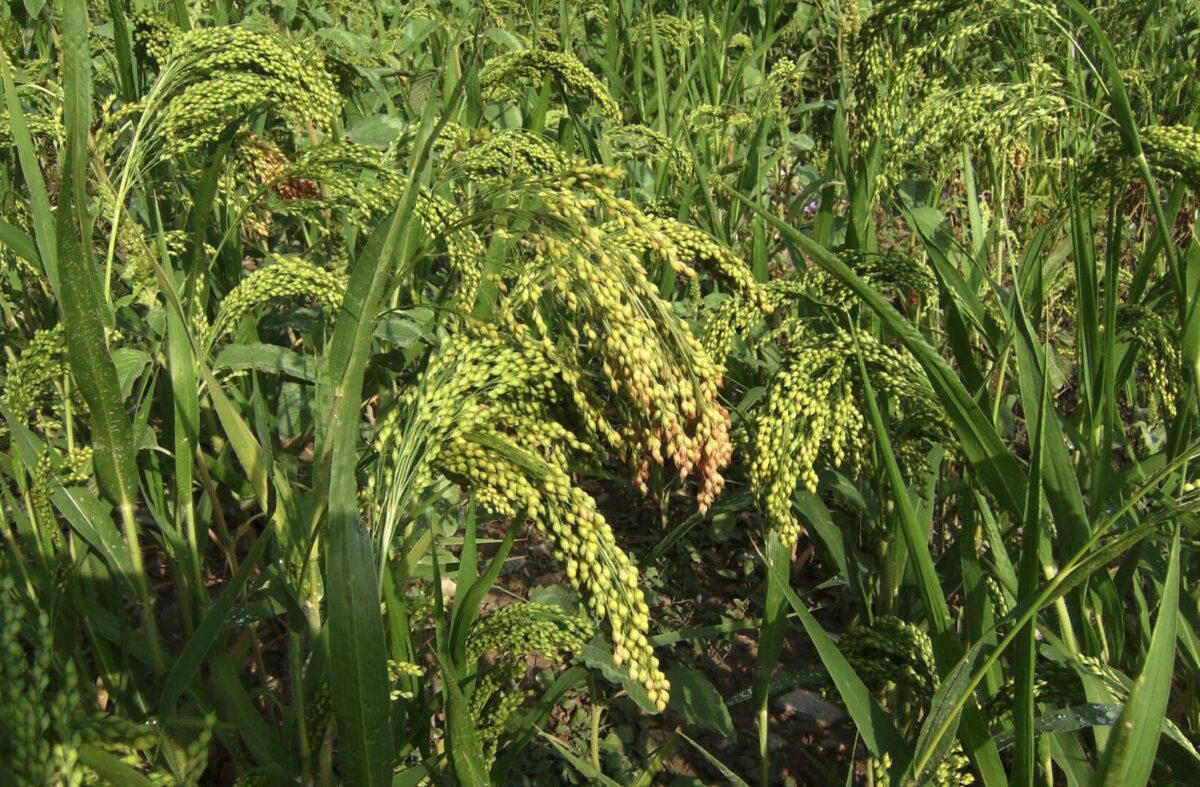Page snapshot: Quick facts about sudangrass (Sorghum x drummondii), a hybrid tropical forage grass.
Topics covered on this page: What is sudangrass?; Where is sudangrass found?; How is sudangrass grown?; How is sudangrass used?; What are the benefits and drawbacks of sudangrass as a forage grass?; Resources.
Credits: Funded by the National Science Foundation. Any opinions, findings, and conclusions or recommendations expressed in this material are those of the author(s) and do not necessarily reflect the views of the National Science Foundation. Page by Deme Burns (2023).
Updates: Page last updated July 8, 2023.
Image above: Sudangrass with maturing spikelets, Catalonia, Spain. Photo by an unidentified photographer (Wikimedia Commons, Creative Commons Attribution 3.0 Unported license. Photo cropped and resized).
What is sudangrass?
Sudangrass (Sorghum x drummondii) is a hybrid between two types of grasses in the genus Sorghum: sorghum (Sorghum bicolor) and common wild sorghum (Sorghum arundinaceum), which is a grass originally from Africa and South Asia. Sudangrass is a fast-growing, productive forage grass commonly used as livestock feed (for grazing or to make hay or silage) and as a cover crop.
Sundangrass is tall (3–8 feet or 0.9–2.4 meters) with slender stems and large leaves. The panicles and spikelets range in color from red to purple, bronze, cream, yellow, and black. The color can add decorative value, although sudangrass is not generally cultivated as an ornamental.
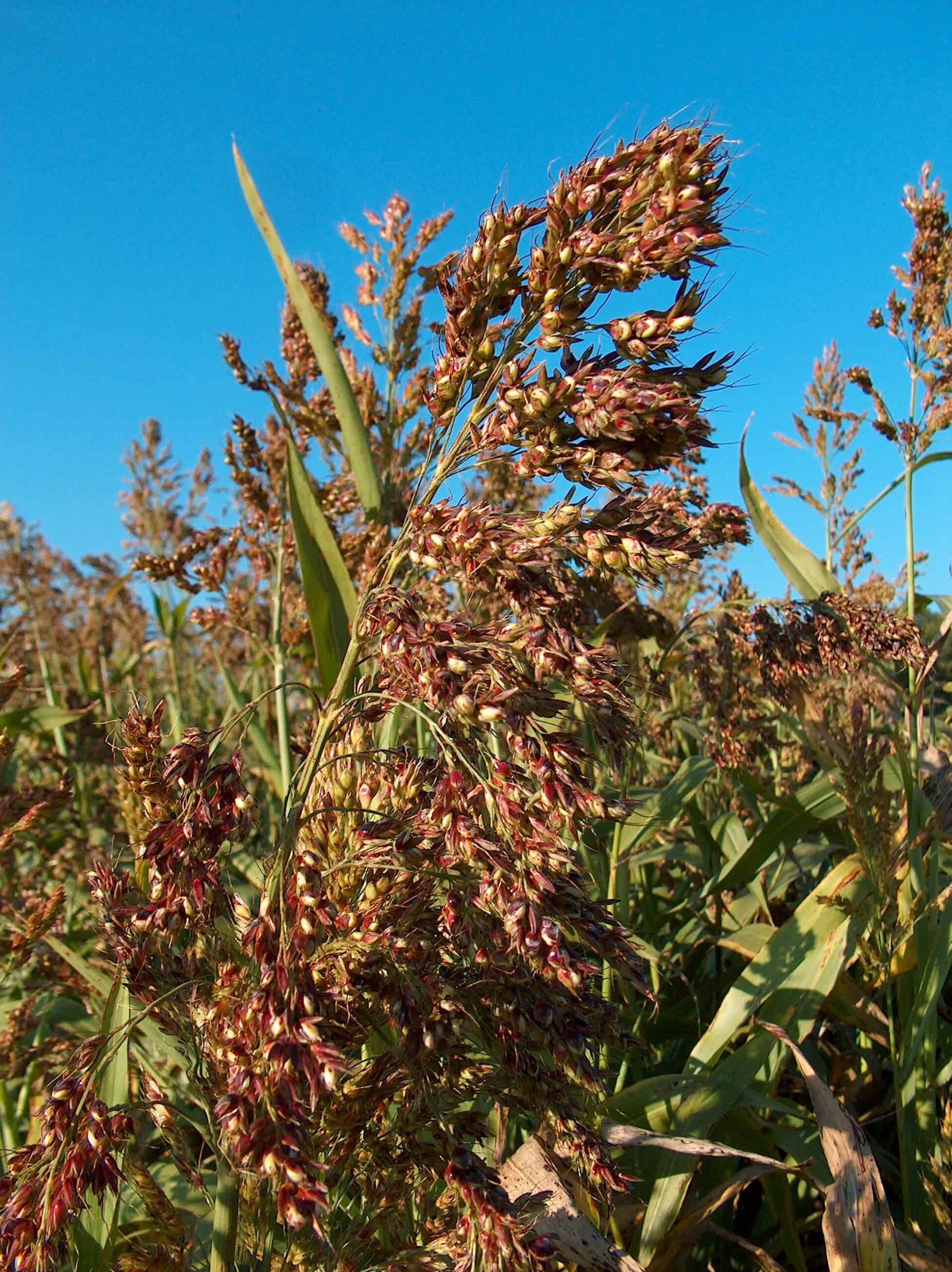
A close-up of sudangrass illustrating the red color of the spikelets, which is due to the presence of anthocyanin pigments. The intensity of red varies depending on environmental factors. Photo by Markus Hagenlocher (Wikimedia Commons, Creative Commons Attribution 3.0 Unported license. Photo resized and cropped).
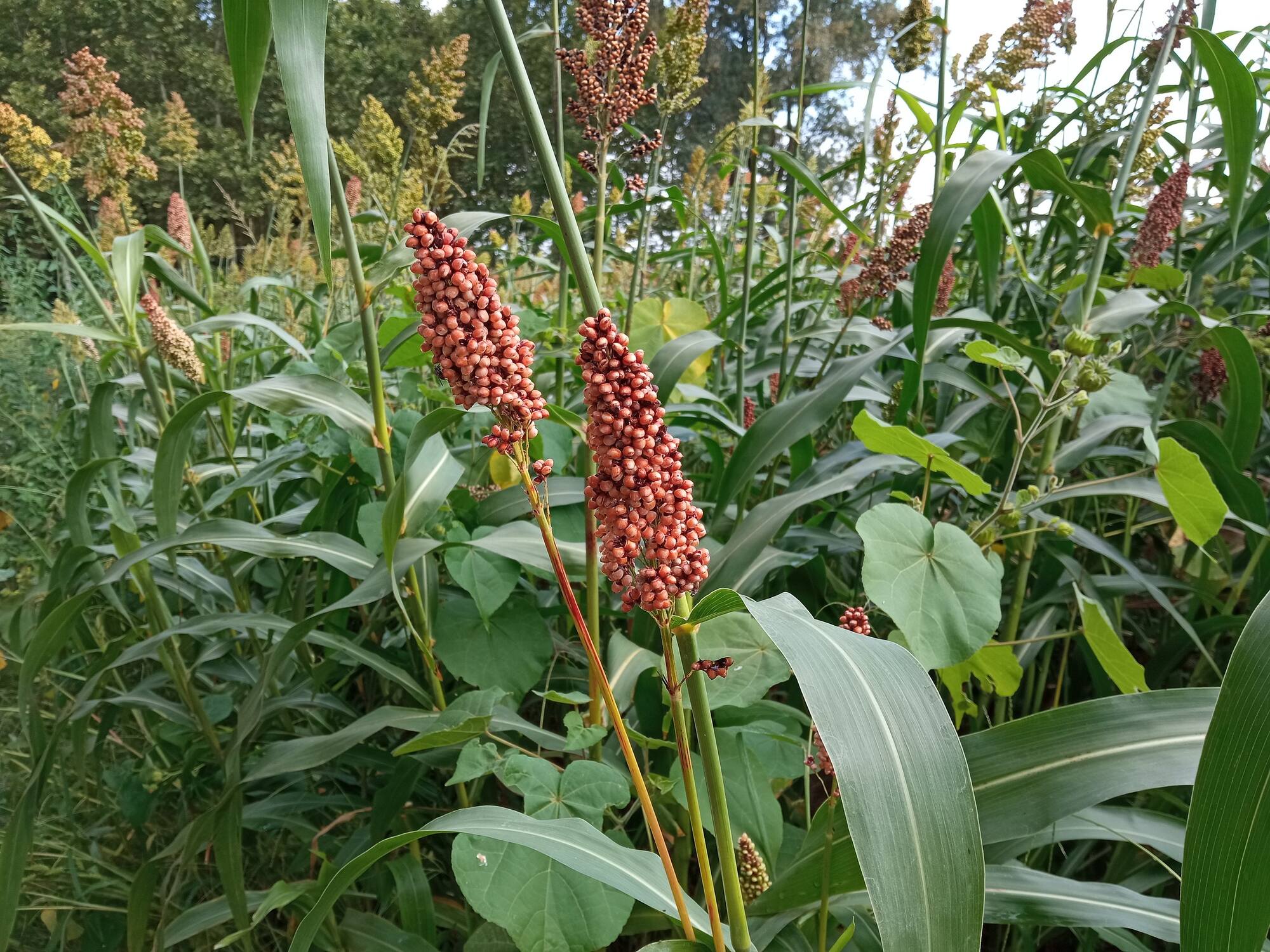
Sorhgum (Sorghum bicolor), one of the parent plants of sudangrass, Catalonia, Spain. Photo by Josep Gesti. Wikimedia Commons, Creative Commons Attribution-Share Alike 4.0 International license. Photo was resized.
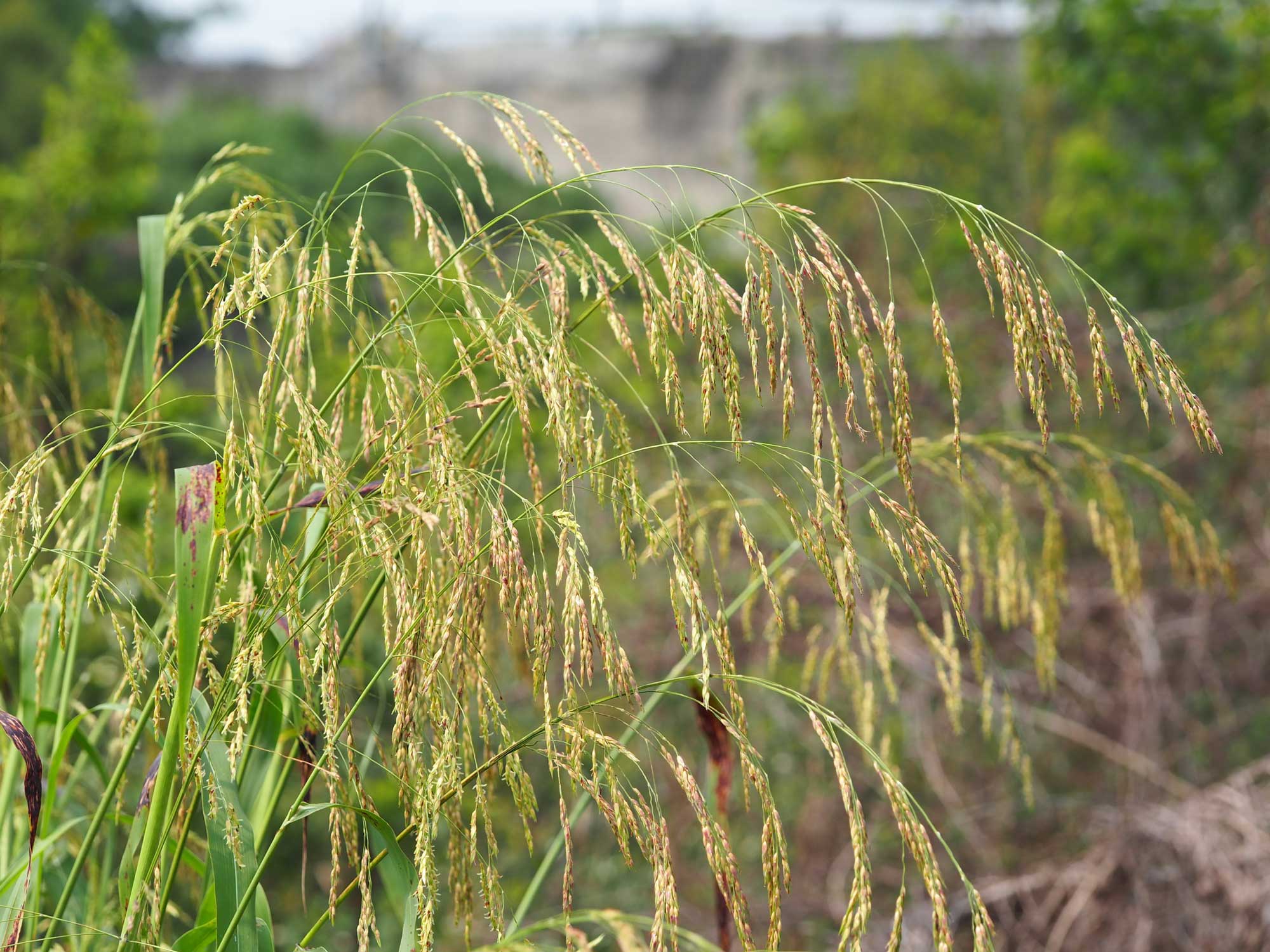
Common wild sorghum (Sorghum arundinaceum), one of the parent plants of sudangrass, Taiwan. Photo by 葉子 (iNaturalist photo 185029347, CC0 1.0 Universal, public domain dedication).
Where is sudangrass found?
Sudangrass originated in subtropical and tropical regions of eastern Africa. It was first documented in the country Sudan, giving the grass its common name. In other African countries—such as Nigeria, Ethiopia, Kenya, Tanzania, and much of South Africa—sudangrass is used as a forage crop. Sudangrass is now cultivated all over the world.
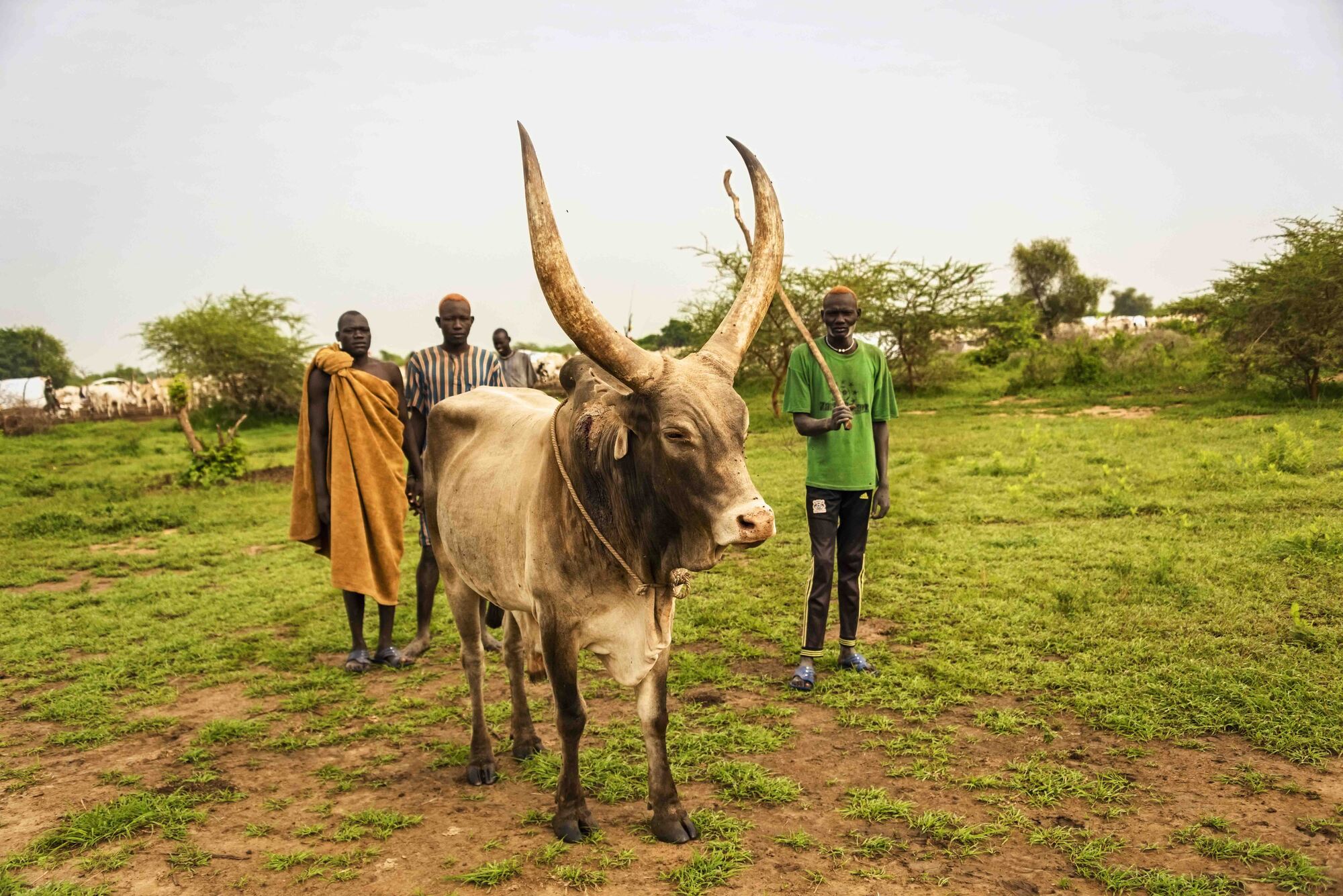
Men with a cow in South Sudan, which is in the region of origin of sudangrass, 2019. Photo by Rod Waddington (flickr, Creative Commons Attribution-Share Alike 2.0 Generic license. Photo cropped and resized).
How is sudangrass grown?
Sudangrass grows in subtropical and tropical regions and prefers warm to hot temperatures, growing best at temperatures between 77ºF to 95ºF (25ºC to 35ºC). It can grow in a variety of soils, including clay, loam silt, and sand. Sudangrass is drought tolerant and prefers well-drained soils. However, in longer periods of drought, sudangrass may accumulate prussic acid, which can be deadly to livestock. For this reason, sudangrass as a forage performs best in areas with around 20–28 inches (about 51–57 centimeters) of rainfall per year. Since sudangrass is a tropical crop, it prefers full sunlight.

Sudangrass and black locust (Robinia pseudoacacia, a tree in the legume family) competing for space in Kolarska, Serbia. Photo by Jozefsu (Wikimedia Commons, Creative Commons Attribution 4.0 International license. Photo cropped and resized.)
How is sudangrass used?
Sudangrass can be used as a forage or can be cut green for feed after a relatively short period (5 to 8 weeks) of growth, or when the grass reaches about 18 inches (46 centimeters) high. It is also harvested for hay and silage when it reaches about around 30 inches (76 centimeters) high. If harvested, the grass is cut above the base to allow for regrowth.
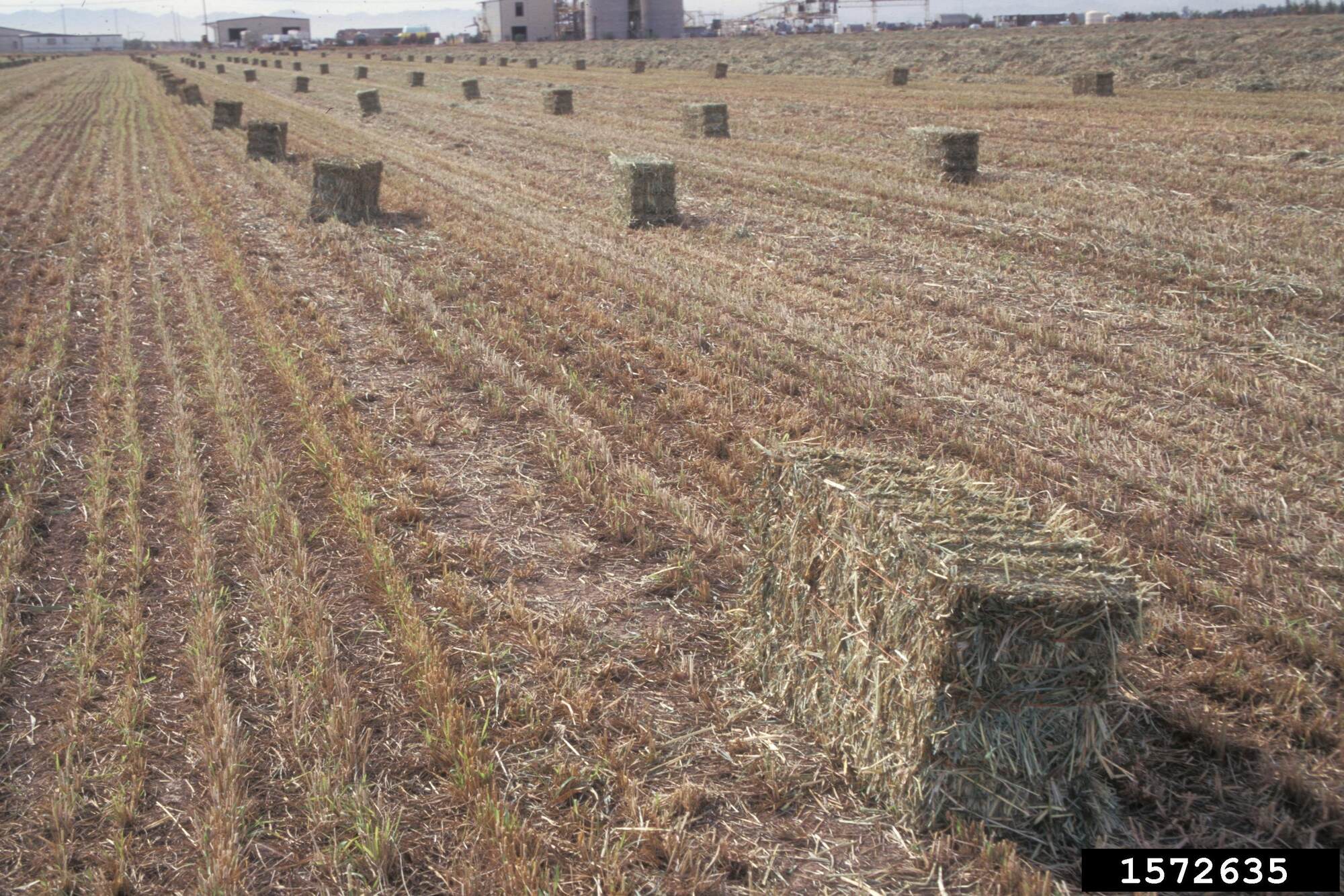
Sudangrass in a field that has been cut, dried, and baled for use as hay. Photo by Gerald Holmes (Bugwood.org image number 1572635, Creative Commons Attribution-NonCommercial 3.0 United States license).
What are the benefits and drawbacks of sudangrass as a forage grass?
Sudangrass has several characteristics that make it advantageous to farmers. It is known for its high yield and fast rate of growth. Because it grows quickly, multiple crops can be harvested during the growing season. Farmers can thus save money and buy fewer seeds while still producing abundant hay, silage, and/or forage grass.
Sudangrass is nutritious and contains carbohydrates, proteins, and minerals. It meets most of the nutritional requirements of livestock like cattle, sheep, and goats, thus promoting animal growth and milk production. Sudangrass is suitable for silage production, allowing it to be preserved for use during times when forage is less available.
Sudangrass can accumulate nitrates and prussic acid (hydrogen cyanide) in its tissues under certain conditions of stress, such as during a long drought, after a frost, or following overgrazing. Nitrates and prussic acid can poison livestock, causing health issues and possibly death. Because of this, sudangrass should be grown under the proper conditions (for example, it should be provided with enough water) and not grown in areas where it could be exposed to frost. Current research is focused on developing new strains of sudangrass with low hydrocyanic acid content.
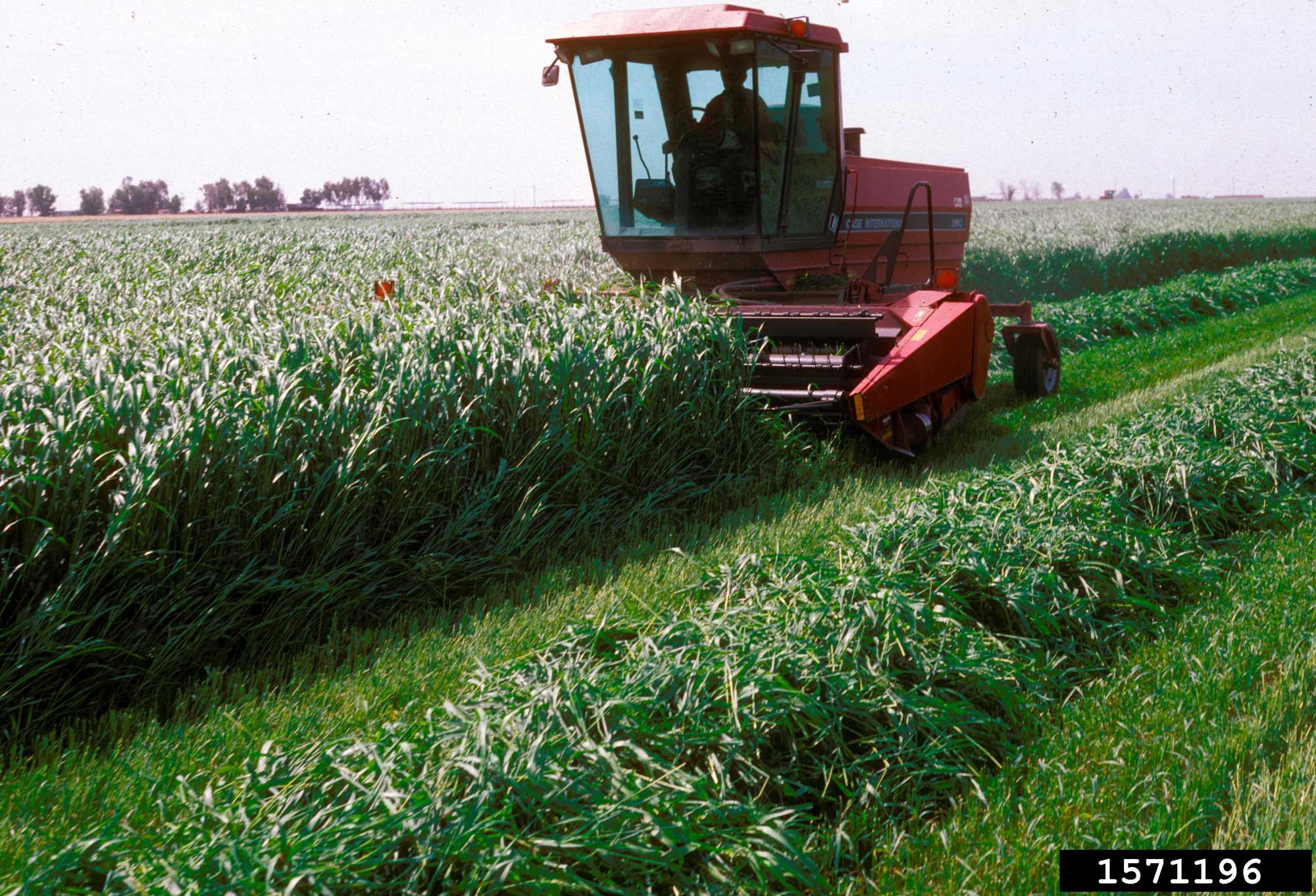
A field of sudangrass being cut. Photo by Gerald Holmes (Bugwood.org image number 157119, Creative Commons Attribution-NonCommercial 3.0 United States license, image resized).
Resources
Websites
Sorghum x drummondii (Nees ex Steud.) Millsp. & Chase. AusGrass. https://keys.lucidcentral.org/keys/v3/AusGrass/key/AusGrass/Media/Html/SORGHUM/SORDRU.HTML
Sorghum (annual) Tropical Forages. 2020 https://www.tropicalforages.info/text/entities/sorghum_annual.htm
Articles & reports
Cassida, K. 2012. Sorghum-sudangrass pasture poses prussic acid and nitrate poisoning risk. Forage Conneciton, Michigan State University, September 26, 2012. https://forage.msu.edu/extension/sorghum-sudangrass-pasture-poses-prussic-acid-and-nitrate-poisoning-risk/
Scientific articles
Magomere, T., S. Obukosia, M. Albertsen, F. Wambugu, D. Kamanga, M. Njuguna, J. Gaffney, Z.-Y. Zhao, P. Che, A. Aseta, E. Kimani, and E. Mwasame. 2016. Evaluation of fitness in F2 generations of Africa Biofortified Sorghum event 188 and weedy Sorghum biocolor spp. Drummondii. Electronic Journal of Biotechnology 22: 52–61. https://doi.org/10.1016/j.ejbt.2016.06.001
Shuag, S. P. 1990. Studies on inheritance of hydrocyanic acid potential in forage sorghum. I. The variation and maternal effect of hydrocyanic acid potential in forage sorghum. Journal of Taiwan Livestock Research 23: 41–50.
Wu, G., Z. Yu, Q. Lu, X. Yu, Y. Niu, Y. Shi, and J. Li. 2019. QTL mapping of hydrocyanic acid content in sorghum-sudangrass. Acta Botanic Boreali-Occidentalia Sinica 39: 2170–2178.



